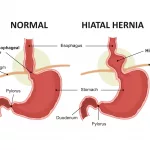Quick answer: if your periods are more than 60 days apart and you’re edging toward a whole year without a bleed, you’re likely in the final stretch of perimenopause. Those long gaps are the body’s way of saying the hormonal engine is winding down.
Why does that matter? Knowing you’re almost at the finish line helps you plan health checks, decide whether hormone‑replacement therapy is right for you, and gives a little peace of mind during a phase that can feel anything but predictable. Think of it like spotting the amber light before the traffic signal turns red—you get a moment to slow down, check your mirrors, and prepare for what’s ahead.
End Looks Like
Definition: When 12 Months Without a Period Means Menopause
Medical guidelines state that menopause is officially reached after 12 consecutive months without a menstrual bleed, assuming no other health issues are causing the pause. According to the Cleveland Clinic, this is the point when the ovaries have essentially stopped releasing eggs and estrogen production drops dramatically.
Why 60‑Day Gaps Flag the Late Stage
Before you hit a full year, many women notice their cycles stretching beyond the usual 28‑day rhythm. A gap of 60 days or more is a strong indicator you’re entering the “late perimenopause” window. Research from Everbliss shows that the average gap length in the final perimenopausal years hovers around 70 days, signaling that ovarian activity is becoming irregular and eventually ceasing.
Common Misconceptions
It’s easy to think that “irregular” simply means “still perimenopausal.” In reality, an irregular cycle can be a sign you’re almost there, especially if the irregularity leans toward longer gaps rather than shorter ones. Remember, every woman’s timeline is unique—some may swing from 30‑day cycles to 90‑day gaps within a few months, while others stay at 45‑day intervals for years.
Core End Signs
| Sign | What to Look For | Why It Happens |
|---|---|---|
| Period Gap > 60 days | Cycles suddenly stretch beyond two months. | Estrogen and progesterone levels fall, and ovulation becomes sporadic. A study notes this as a hallmark of the transition. |
| Amenorrhea ≥ 12 months | No bleeding for a full year. | Ovarian follicles have largely exhausted; hormone production stalls. |
| Hot‑Flashes Calm Down | Fewer episodes, lower intensity. | Vasomotor symptoms often peak mid‑transition and taper off as estrogen steadies at low levels. |
| Cycle Variability Drops | Periods become predictably long or stop altogether. | Hormone fluctuations flatten out; the endocrine “roller coaster” slows. |
| Sleep & Mood Stabilize | Fewer night‑time awakenings, mood swings ease. | Reduced hormonal swings lessen neuro‑chemical turbulence. |
Period Gap > 60 Days
When your calendar shows a two‑month stretch between periods, it’s a clear sign that ovarian output is dwindling. The body simply can’t maintain the regular menstrual “engine” without sufficient estrogen, so the cycle lengthens. This gap often precedes the definitive 12‑month amenorrhea.
Amenorrhea ≥ 12 Months
Reaching a full year without a period is the gold standard for diagnosing menopause. The Marion Gluck Clinic emphasizes that this “absence of menstrual periods for 12 consecutive months” is the official marker that the reproductive phase has closed.
Hot‑Flashes Calm Down
Hot flashes can feel like sudden internal fireworks. In the late perimenopause, many women report that the frequency and intensity start to fade. WebMD explains that vasomotor symptoms often peak in the middle of the transition and recede as hormone levels plateau at lower levels.
Cycle Variability Drops
Early on, you might see a wild swing from 21‑day cycles to 45‑day cycles. Near the end, those swings settle—either the cycle becomes consistently long (e.g., 70 days) or it stops. This stabilization reflects the body’s “shutdown” mode.
Sleep & Mood Stabilize
Sleep disturbances and mood swings are notorious perimenopausal companions. As hormonal chaos eases, many women notice more restful nights and steadier emotions. Personal stories on Flo Health echo this trend, noting a “return to normal” feeling once the transition settles.
Track Your Progress
Period‑Tracking Apps
Modern apps like Flo, Clue, and Period Tracker let you log each bleed, set alerts for gaps over 60 days, and even chart hot‑flash frequency. The visual graphs can be an eye‑opener—seeing a 70‑day gap on screen feels more concrete than a vague memory.
Home Hormone Test Kits
If you crave numbers, hormone kits that measure FSH, estradiol, and LH are readily available. They’re not a substitute for a doctor’s interpretation, but they can give you a ballpark picture of where you sit on the menopause transition timeline. Always follow up with a clinician to confirm the results.
Symptom Diary
Grab a notebook or a simple spreadsheet and record:
| Date | Symptom | Severity (1‑5) |
|---|---|---|
| 2025‑03‑01 | Hot flash | 3 |
| 2025‑03‑04 | Night sweat | 2 |
| 2025‑03‑10 | Period (bleed) | 1 |
This log helps you spot patterns—maybe hot flashes dip right after a long cycle, or mood steadies once you hit a 90‑day gap.
Seek Professional Help
Red‑Flag Symptoms
If you experience heavy unexpected bleeding, sudden weight loss, severe anxiety, or pelvic pain, reach out to your doctor promptly. These could signal conditions unrelated to menopause that need immediate attention.
Timing for a Menopause Consultation
Women under 45 who have gone nine months without a period should consider a visit—early evaluation can rule out premature ovarian insufficiency (POI) and help you plan bone‑health strategies.
Treatment Options After Confirmation
Hormone‑replacement therapy (HRT) isn’t mandatory, but it’s a solid option for many who struggle with lingering hot flashes or bone density loss. Lifestyle tweaks—regular weight‑bearing exercise, calcium‑rich foods, and adequate sleep—also play a huge role. Your clinician can tailor a plan based on your health history, symptom severity, and personal preferences.
Benefits vs Risks
Benefits of the Transition
Ending the reproductive cycle reduces the risk of ovarian and endometrial cancers. It also means you’ll no longer have to worry about unplanned pregnancies once you’ve confirmed 12 months of amenorrhea.
Risks to Keep on Your Radar
Lower estrogen can affect bone density, cardiovascular health, and urogenital tissues. That’s why calcium + vitamin D, regular resistance training, and routine blood‑pressure checks are essential. A recent Lancet review highlights that women who adopt preventive measures during the menopause transition experience up to a 30 % lower risk of osteoporosis.
Preventive Actions You Can Take Today
- Aim for at least 1,200 mg of calcium daily (dairy, fortified plant milks, leafy greens).
- Get 800–1,000 IU of vitamin D either through sunlight, diet, or supplements.
- Engage in weight‑bearing activities—walking, dancing, resistance bands—3‑4 times a week.
- Schedule an annual lipid panel and blood‑pressure check.
- Discuss bone‑density scanning (DEXA) with your doctor if you’re over 50 or have risk factors.
Real Life Stories
Laura’s Long‑Gap Revelation
Laura, 48, noticed her periods stretching from the usual 28 days to a 70‑day interval over six months. She logged the gaps in Flo, and the app’s alert nudged her to book a check‑up. Bloodwork confirmed FSH = 35 mIU/mL, confirming she was in the final phase. “Seeing that number felt like a finish line,” she says. “I finally stopped wondering if my hot flashes would ever ease.”
Maya’s Hot‑Flash Fade‑Out
Maya, 52, struggled with nightly sweats for years. After hitting a 12‑month period gap, her night sweats dropped from nightly eruptions to once a month. “It was like the thermostat finally found its setting,” she jokes. Maya now focuses on bone‑health exercises and feels more confident about aging gracefully.
Conclusion
Spotting the signs that perimenopause is ending—long period gaps, the 12‑month amenorrhea, calming hot flashes, steadier moods, and the gradual flattening of your cycle—gives you a roadmap for the next chapter of your life. By tracking your cycles, logging symptoms, and staying in touch with a trusted health professional, you can transition with confidence, knowing you’ve got the tools to manage benefits and mitigate risks.
So, what have you noticed in your own journey? Have you started marking those 60‑day gaps on a calendar, or perhaps you’re already celebrating a year without a period? Share your experiences in the comments below, ask questions, or simply give yourself a virtual pat on the back for navigating this ever‑changing terrain. The road ahead may be new, but you’re not walking it alone.


















Leave a Reply
You must be logged in to post a comment.